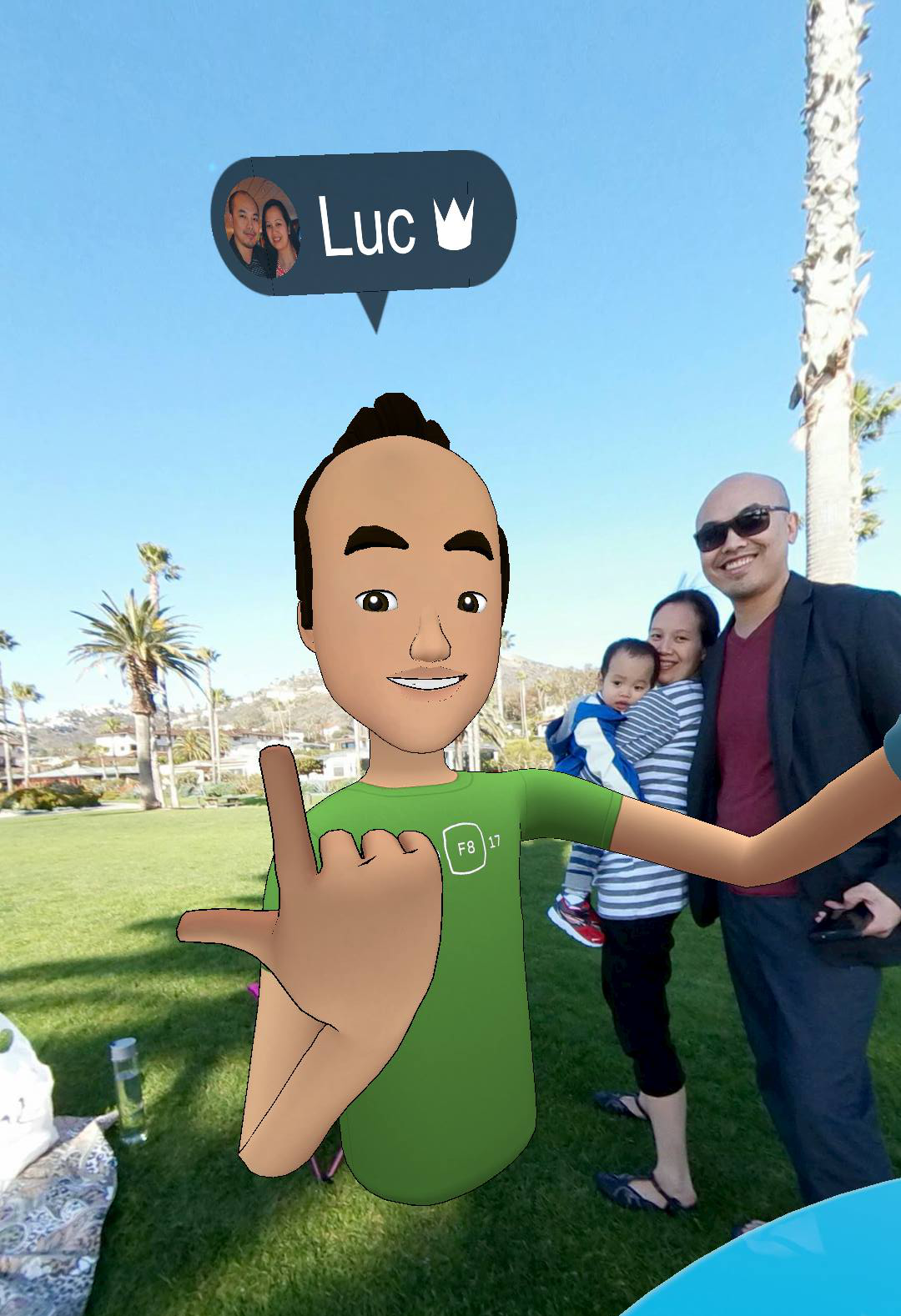Facebook tries out social VR with a rough Beta
Mark Zuckerberg introduced this new test app at F8 which allows us to talk with our friends through a desktop Oculus. While similar to the efforts of AltSpace or vTime, this one benefits from direct access to your FB account. It uses a stationary avatar at an activity desk and a 360 image backdrop as the starting point. In a few years, social exchanges will likely be one of the top opportunities in virtual space but if efforts like Facebook Spaces are any example, the road won’t be an easy one.
The Good
On an individual feature level, there’s a lot of novelty to set it apart. First, with use of motion controllers, the avatars have a lot of range and personality–namely ours. By having a virtual mirror in front of us, we get to emote with our cartoon selves before even getting into the social aspect. Speaking into the mic triggers mouth movements. There are reactive facial expressions which also seem to appear randomly. I have to admit, this extra layer of gestural feedback made we warm up to the app more so than its predecessors especially when communicating with a friend. There is an amazing amount of expression that is conveyed between 2 people (perhaps subconsciously) through a bobbing head, waving fingers and a handful of tricks from emoticons. The avatar’s starting point came from analyzing your FB photos–a common trick these days but still a nice touch to tie it in with your account. The selfie stick was a great touch, as was the ability to view and share 360 images from my FB account. The images looked very vivid and I could see having a conversation with someone about them in context.
The Bad
The UI needs A LOT of polish.
Orientation. Without clear direction on how to get this table focal-point right in front of me made me almost give up using the program. I also didn’t know what I was supposed to do if I dropped something from the table to the floor. Given the reality of our limited play area, making someone like my mom feel comfortable exploring the space would be an ideal goal. It was unclear how we should interact with the spaces that fall below sensor detection.
Touch system. The main menu can be pressed without squeezing any buttons. However, to change options like your avatar’s face, you need to squeeze the palm button to retract your fingers into a fist, leaving the index finger pointed. Every time I tried to pick a feature on my face to change, the UI would snap me out of that mode. I know this is something that Oculus has been trying to push as a convention. I’m not convinced it works. I suspect the next gen controllers will be heavily redesigned to allow more free finger tracking but in this version, squeezing anything to “reveal” a pointing position just comes out as counter-intuitive. Additionally, the fact that my hand does different things at different levels of menu hierarchy seems like a carry-over from mobile dev thinking and not a VR-embracing solution. I’m either holding controllers–which I am– or my hands are just hands. Confusing the two makes for a frustrating learning curve.
Clutter. In their example, there were Snapchat-like props with bunny ears that we could pickup and wear. They were, however, superimposed onto the mirror which made them impossible to grab while blocking out most of my face until I figured out how to exit the mirror to move the ears out of my front viewing area. I feel like it has already become a convention thanks to Tiltbrush but when we are done with something, we should have the option to fling it out of existence rather than press the little button on the inside of our virtual wrist. Again, it felt like a mobile app convention. Maybe the issue is that the table and small interface panel construct provided too much freedom to make errors. I’d rather have larger, more course interactions similar to Job Simulator that gives me confidence that everything I was doing would sort of click into place.
Ideas
The biggest conceptual miss for Social VR is still the lack of purpose–a purpose strong enough to pull non-enthusiasts into the space and keep them there. I call this the talking heads in a paper world problem. I know FB wants this to be a test case for mobile VR where everyone can wear their phones to FB post with one another. Before that happens, the why needs to be greater than the effort. Sharing existing assets is a great start. I loved the idea on the Gear VR of watching a movie with remote friends. I would begin by focusing on the power users–those who spend a majority of their time being physically isolated from their friends and family. Headset-based VR will never be as quick and easy as pulling up a phone app. It also doesn’t need to be. People will go the a metaspace by appointment to play games. They will do so to plan activities, especially those where the context matters. Stock activities that are relatable for the general audience are incredibly important. FB should be forming licensing partnerships to virtualize existing popular locales with specific unique draws. It’s one thing to visit a VR amusement park. It’s quite another to visit Disneyland and relive your childhood with your kids. For those who frequently travel, social VR could be the one-on-one time that lets them maintain a sacred routine. Let’s also not forget that most communication is done non-verbally. I would push immediately to add haptics that allow hands and faces to touch. This small trick could go a long way in conveying the simplest message that matters : I care.
